“Poetry is thoughts that breathe and words that burn.” —Thomas Gray
During the month of April devout readers and writers across the nation celebrate the literary genre of Poetry. According to Poets.org, National Poetry Month was established in 1996 by the Academy of American Poets to increase awareness about the importance of poets and how they play a vital part in our culture.
I have heard many opinions when it comes to poetry. People say it’s too “pretentious” or it never “gets straight to point.” Poetry is not meant to be direct with its meanings. Most people are lazy when interpreting poetry not realizing that the purpose of poetry is to be as aesthetically pleasing as possible, with the words that create the lines and form the stanzas. Its literal definition is “literary work in which special intensity is given to the expression of feelings and ideas by the use of distinctive style and rhythm; poems collectively or as a genre of literature.”
According to Poetry Foundation’s website, within the genre of Poetry, there are 15 types but of those 15, most people are familiar with these 5:
Rhymed poetry: The repetition of syllables, typically at the end of a verse line. Rhymed words conventionally share all sounds following the word’s last stressed syllable. A rhyme scheme is usually the pattern of end rhymes in a stanza, with each rhyme encoded by a letter of the alphabet, from a onward (ABBA BCCB, for example). Rhymes are classified by the degree of similarity between sounds within words, and by their placement within the lines or stanzas.
For example: Rosebuds by Justin Wetch in “Bending the Universe” (2016)
A branch held on during the winter
Against countless winds and gusts
Armies of snow slowly retreated
The howling winds have been shushed.
Green attacks the canvas
And the scene is vibrantly alive
The birds return, the bees appear
To make honey in their hive.
Stalks flash up from the ground
But militia weeds they are not
No, these are treasured rosebuds
Spreading beauty as nature ought.
The promise of much beauty
Brings bird songs to a halt
Rosebuds grow imperfect cadence
Dancing to life\’s slow waltz.
Free verse: Nonmetrical, nonrhyming lines that closely follow the natural rhythms of speech. A regular pattern of sound or rhythm may emerge in free-verse lines, but the poet does not adhere to a metrical plan in their composition.
Epics: A long narrative poem in which a heroic protagonist engages in an action of great mythic or historical significance. A notable English epic would be Beowulf.
Haiku: A Japanese verse form most often composed, in English versions, of three unrhymed lines of five, seven, and five syllables. A haiku often features an image, or a pair of images, meant to depict the essence of a specific moment in time.
Although it is National Poetry Month, in honor of Cherry Blossom season, here are a few Haikus written by Masaoka Shiki who was a famous Japanese writer in the late 1800s.
1. the cherry blossoms:
being ill, how many things
I remember about them
2. scatter layer
by layer, eight-layered
cherry blossoms
3. entangled with
the scattering of cherry blossoms—
the wings of birds!
Ode: A formal, often ceremonious lyric poem that addresses and often celebrates a person, place, thing, or idea. Its stanza forms vary.
So, during this time, while we’re all in the safe space of our homes, I encourage you to write some of your own poetry. It could simply be about all that’s going on in the world, or simply what’s in your head and heart. Maybe even check out a few of my favorite few poetry books such as “Bending the Universe” by Justin Wecth, “The Chaos of Longing” and “Submerge” by K. Y. Robinson, “Nirvana” (Parts 1 and 2) by Michael Tavon and “Healing The Soul” by Sasha Love.
Find out 30 more ways you can celebrate National Poetry Month at home by checking out this link from Poets.org: https://poets.org/national-poetry-month/30-ways-celebrate-national-poetry-month-home-or-online

